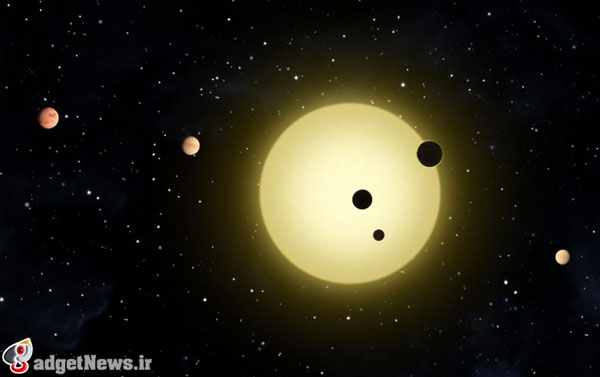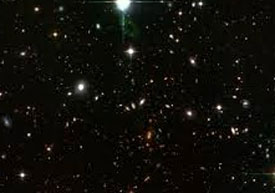
یک تیم بینالمللی از دانشمندان موفق به شناسایی شش ستاره مشابه خورشید با کمربندهای غبار خارقالعاده شدهاند. این دیسکهای غبار کشف شده نه تنها بزرگتر از کمربند کپلر بلکه بسیار سرد هستند. با دمای تقریبا 250- درجه سانتیگراد این دیسکها احتمالا سردترین نمونههای شناختهشده تاکنون هستند.
 در مقام مقایسه، کمربند کپلر حدود 70 درجه سانتیگراد گرمتر بوده و برخی از دیسکهای غبار از دمای اتاق برخوردارند.این شش دیسک غبار به دلایل دیگر نیز اسرارآمیز هستند. آنها فاقد مشخصه گرد و غبار هستند که همیشه در زمان برخورد سنگها منتشر میشود.
در مقام مقایسه، کمربند کپلر حدود 70 درجه سانتیگراد گرمتر بوده و برخی از دیسکهای غبار از دمای اتاق برخوردارند.این شش دیسک غبار به دلایل دیگر نیز اسرارآمیز هستند. آنها فاقد مشخصه گرد و غبار هستند که همیشه در زمان برخورد سنگها منتشر میشود.
به گفته دانشمندان، ذرات کوچکتر غبار بسیار گرمتر از دمای این دیسک ها هستند. بر این اساس، دیسک های سرد فقط از سنگهای تقریبا نه چندان بزرگ ساخته شدهاند.محاسبات دانشمندان نشان داده که شعاع ذرات بین چند میلیمتر و حداکثر چندین کیلومتر است.این محققان با استفاده از رصدخانه فضایی هرشل که بزرگترین تلسکوپ ارسال شده به فضا بوده، توانستهاند این دیسک های غبار غیرعادی را کشف کنند.
رصد دیسک های غبار سرد به رغم اثربخشی عظیم آن، حتی برای هرشل نیز کار بزرگی بوده است؛ از این رو دانشمندان از قابلیت درک این امکان که شاید این دیسک های غبار فرضی کهکشان های زمینهیی باشند که از سر اتفاق در پشت ستاره مرکزی قرار گرفتهاند، برخوردار نیستند.
محققان بر این باورند که میتوانند یقین نهایی در مورد یافتههای خود را با کمک دادههای ابزارهای بیشتر مانند تلسکوپ رادیویی آلما در شیلی به دست بیاورند.این پژوهش در مجله Astrophysical منتشر شده است.
منبع : dnaindia
Herschel Space Observatory discovers 6 Sun-like stars with dust belts
With a temperature of about minus 250C they are the coldest debris disks known so far.
An international team of scientists, has observed six stars similar to the Sun with extraordinary dust belts.
The newly discovered debris disks are not only bigger than the Kuiper belt. Above all they are extremely cold.
With a temperature of about minus 250C they are the coldest debris disks known so far.
“We were surprised that such cold debris disks exist at all,” Alexander Krivov, the lead author of the new study, said.
By way of comparison, the Kuiper belt is about 70C degree warmer, some of the dust disks even reach room temperature.
The six debris disks are mysterious for yet another reason.
They are lacking the characteristic dust which is always released when the rocks collide.
“Small dust particles are much hotter than the temperatures observed by us,” Krivov said.
According to this, the cold debris disks only consist of bigger but at the same time not-too-big rocks.
The calculations of the scientists suggest that the radius of the particles lies between several millimeters and several kilometers maximum.
The scientists came across the unusual debris disks with the help of the Herschel Space Observatory — the largest telescope that was ever launched into space.
In spite of its enormous effectiveness the observation of the cold debris disks was a demanding task even for Herschel.
Thus, scientists cannot rule out the possibility that the supposed debris disks could actually be background galaxies which just happen to be behind the central star.
The scientists reckon that they will gain final certainty about their findings with the help of data by further instruments like the radio telescope ALMA in the Chilean Atacama Desert.
The findings are published online in the science journal The Astrophysical Journal.
 گجت نیوز آخرین اخبار تکنولوژی، علم و خودرو
گجت نیوز آخرین اخبار تکنولوژی، علم و خودرو 





